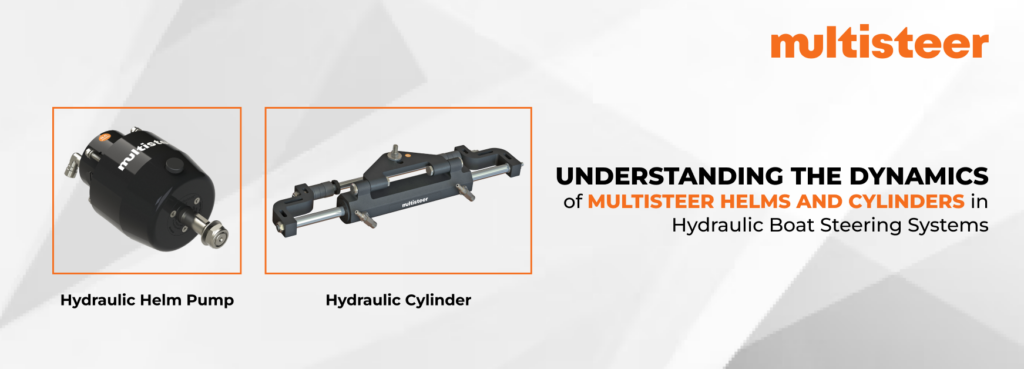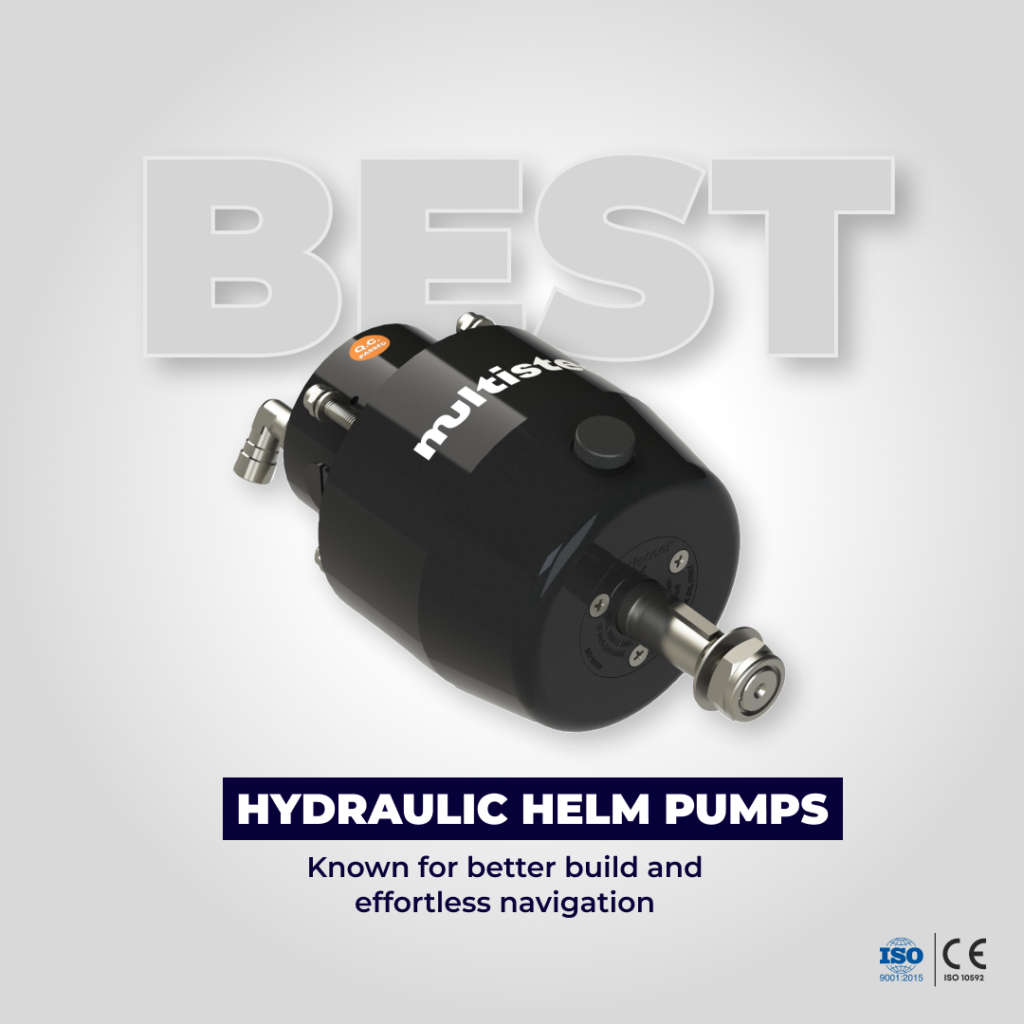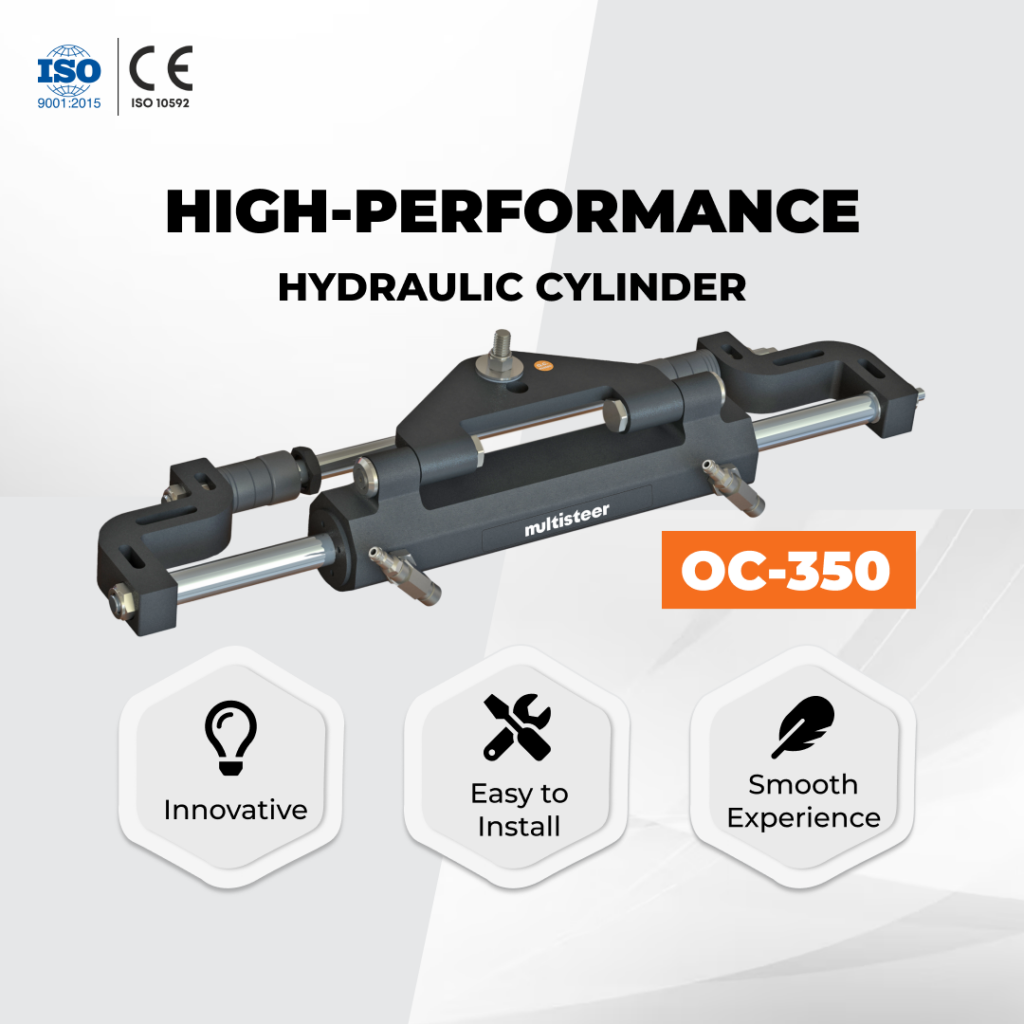In the intricate world of hydraulic boat steering systems, two indispensable components play pivotal roles – Multisteer Helms and Cylinders. While both are essential for seamless navigation, they serve distinct functions, each contributing to the precision and efficiency of steering.
Thank you for reading this post, don't forget to subscribe!
Multisteer Helm
The Multisteer Helm acts as the control unit, functioning as the steering system’s brain. Typically mounted inside the boat, specifically at the helm station, its operation is initiated when users turn the steering wheel. This action sends hydraulic fluid to the cylinders, facilitating the turning of the boat.
Key Features:
1. Control Unit Functionality: The helm serves as the central control unit for the steering system.
2. Location: Positioned inside the boat, usually at the helm station.
3. Operation: Users turn the steering wheel, directing hydraulic fluid to the cylinders.
4. Types: Available in various models with features such as tilt, trim, and autopilot compatibility.
5. Examples: Notable models include Notable series include HP-16F, HP-20-HP-40, HP-63/80, HP-120/160.
Multisteer Cylinders:
On the other hand, Multisteer Cylinders function as actuators, converting hydraulic pressure into mechanical force to move the boat’s rudder.
Typically mounted on the transom or near the rudder, these cylinders receive hydraulic fluid from the helm, executing the actual movement of the rudder based on the turn direction.
Key Features:
1. Actuator Functionality: Cylinders act as actuators, transforming hydraulic pressure into mechanical force.
2. Location: Positioned outside the boat, near the rudder, or on the transom.
3. Operation: Receive hydraulic fluid from the helm, facilitating rudder movement.
4. Types: Varied in size and capacity to match different boat sizes and engine power.
5. Examples: Notable series include OC-115, OC-175, OC-250, and OC-350.
Distinguishing Features:
Here’s a quick summary highlighting the key differences between Multisteer Helms and Cylinders:
| Feature | Multisteer Helms | Multisteer Cylinders |
| Function | Control unit | Actuator |
| Location | Inside the boat | Outside the boat (near the rudder) |
| Operation | Sends hydraulic fluid | Converts hydraulic pressure to movement |
| Types | Varied with features | Varied by size and capacity |
| Examples | HP-Series | OC-Series |
Analogous to Human Anatomy:
In simpler terms, envision the helm as the brain directing the steering system’s activities and the cylinders as the muscles executing the physical movement of the rudder. The hydraulic fluid acts as the lifeblood, facilitating the communication between the helm and cylinders.
Additional Considerations:
1. Compatibility: While Multisteer Helms and Cylinders are designed to work seamlessly together, it’s crucial to verify compatibility with other brands or existing systems.
2. Upgradeability: Upgrading the helm to a newer model while retaining existing cylinders is possible, but ensuring compatibility is a must. Check with Multisteer Support to ensure the correct kit at customercare@multisteer.com
3. Maintenance: Regular maintenance, including checking fluid levels and seals, is essential for both helms and cylinders to ensure optimal performance. (Worth reading our other blogs on maintenance tips)
Conclusion:
Understanding the distinct functions of Multisteer Helms and Cylinders in hydraulic boat steering systems is crucial for boating enthusiasts and marine industry professionals alike. This knowledge not only enhances the efficiency of steering but also ensures a smooth and safe sailing experience.
To Know More: https://multisteer.com/
Follow our social media pages for more updates: Facebook | Instagram | Twitter | Linkedin | Youtube
#Multisteer #Hydraulicsteering #Boating #Marine #Power #Steerlyteplus #boatsteeringkit #powerassisted #hydraulic #steeringsystem #portugal #Australia #NewZealand #SaudiArabia #Indonesia #Nigeria #Italy #France #Spain #Russia #Norway #SouthAfrica #Philippines #Vietnam #Thailand #Singapore #Finland #Poland #UK #HongKong



